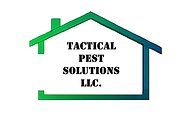How to Stay Safe Around Hornets in Your Area
- David Kelley
- Jun 16
- 4 min read
Hornets can be a terrifying sight for many, especially during the warmer months when they become more active. These insects play crucial roles in our ecosystem, but their aggressive behavior can pose real dangers to humans. Understanding how to cohabitate with these creatures safely is essential. Whether you're gardening, enjoying a picnic, or simply enjoying the great outdoors, knowing how to stay safe around hornets can protect you and your loved ones.
Hornet Safety: Understanding Hornets
Hornets belong to the wasp family and are known for their potent stings. Unlike bees, which tend to be non-aggressive unless provoked, hornets can be territorial. They will defend their nests vigorously. Common species include the European hornet and the bald-faced hornet, which can be found throughout many regions.
Did you know that hornets can sting multiple times? Their stings can be painful, and in some cases, can even lead to allergic reactions. Statistics suggest that about 2 million people a year get stung by wasps and hornets in the US. It's crucial to understand their behavior to avoid startling them. Hornets are most active in the late afternoon and early evening, which is when they might be more irritable.

Signs of a Hornet Nest
Recognizing the signs of a hornet nest can help you steer clear of danger. Hornets typically build their nests in shaded, sheltered areas such as under eaves, in attics, or even in dense shrubs. Their nests can be large, sometimes reaching the size of a basketball.
Pay attention to the following signs:
Increased Hornet Activity: If you notice a sudden rise in hornet activity in your area, there could be a nest nearby.
Visible Nests: Look for gray, papery nests hanging from trees or buildings. Their nests are typically round and often have a smooth surface.
If you find a nest on your property, it's essential to approach the situation with caution. Never attempt to remove a hornet nest during the day; this is when they are most active. Instead, consider hornet control near me to find professional help.

Preventing Hornet Encounters
Taking preventive measures can significantly reduce the risk of encountering hornets. Below are some practical steps to keep hornets at bay:
Keep Food Covered: When enjoying outdoor meals, ensure food is covered. Unattended food will attract not only hornets but other pests as well.
Seal Entry Points: Inspect your home for gaps or cracks where hornets might enter, especially around windows and doors. Seal these gaps using caulk or weather stripping.
Limit Outdoor Trash: Properly dispose of trash, especially food waste. Use tightly sealed containers to deter hornets from scavenging.
Store Drinks Securely: When outdoors, cover any drinks. Hornets can be attracted to sweet beverages like sodas or fruit juices.
By following these preventive measures, you can reduce the likelihood of a hornet encounter, making your outdoor activities safer and more enjoyable.

What To Do If You Encounter Hornets
Despite your best efforts, it’s still possible to encounter hornets. Here’s what to do if you find yourself in such a situation:
Stay Calm: Panic can provoke hornets. Instead, remain still and avoid swatting at them.
Slowly Move Away: If hornets approach you, calmly leave the area without making rapid movements.
Use Protective Clothing: If you know you’ll be working in areas where hornets are present, consider wearing long sleeves and avoiding bright colors. Hornets are attracted to bright shades.
In general, maintaining a low profile around hornets can prevent unnecessary confrontations. Just remember that they are often more interested in finding food than in bothering people.
Dealing with Hornet Stings
Despite all precautions, accidents can happen. If you get stung by a hornet, here’s how to manage the situation:
Remove the Sting: Unlike bees, hornets don’t leave their stingers in the skin, making sting removal straightforward.
Clean the Area: Wash the affected area with soap and water to prevent infection.
Apply Cold Compress: A cold compress can help reduce swelling and relieve pain.
Monitor for Allergic Reactions: If you experience breathlessness, swelling of the face, or hives after a sting, seek medical attention immediately.
Preparedness is key to minimizing the impact of hornet stings. Carrying a small first-aid kit when heading outdoors can be a lifesaver.
Seeking Professional Help
If you discover a hornet nest that poses a threat, it's best to consult a professional pest control service. Professionals have the training and equipment necessary to remove hornet nests safely and effectively.
When searching for help, use the phrase hornet control near me to find local services that can assist you. They will ensure the removal is conducted humanely and safely, minimizing the risk of stings to both you and the hornets residing in your area.
Hornets are fascinating creatures that play a role in the ecosystem, but they can also be a source of danger during the warmer months. Understanding their behavior, knowing how to prevent encounters, and being prepared for potential stings will help you enjoy your time outdoors with confidence. Remember, knowledge is your greatest ally in staying safe around hornets!






Comments